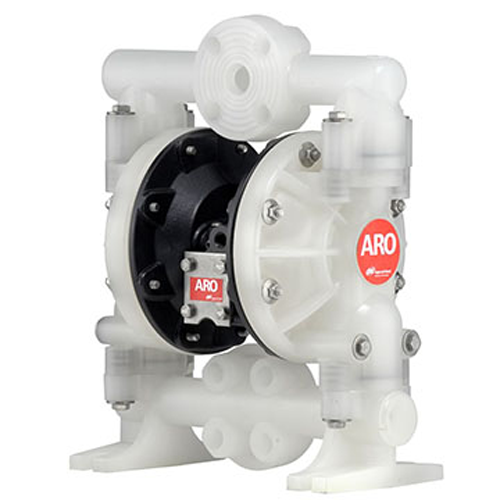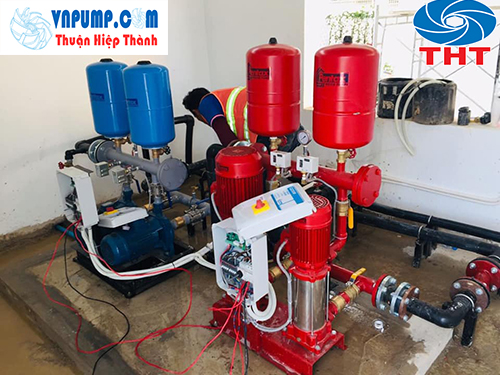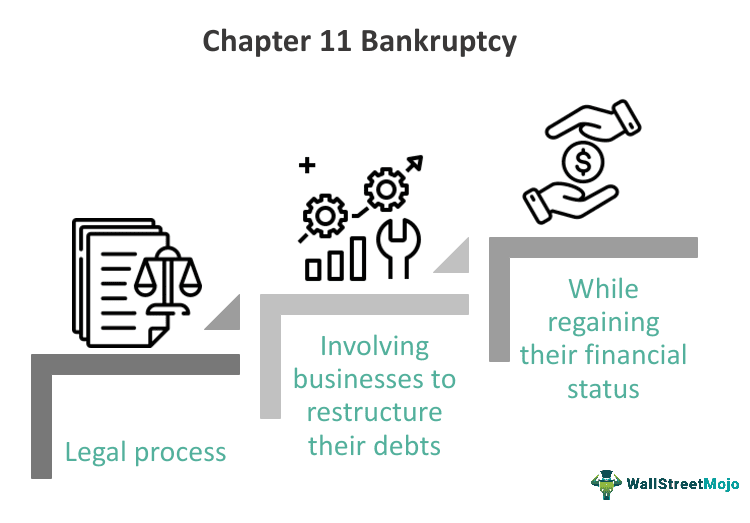In the rapidly evolving landscape of digital transformation, Cloud Computing has become synonymous with agility, scalability, and innovation. Among the leading global cloud providers, Oracle Cloud Computing stands out with a distinctive approach, leveraging decades of experience in serving enterprise needs, particularly around mission-critical databases and applications. Oracle Cloud, officially known as Oracle Cloud Infrastructure (OCI), represents Oracle’s second-generation cloud platform, designed from the ground up to address the limitations perceived in earlier cloud architectures and built specifically with enterprise workloads in mind. Far from being just another cloud provider, Oracle Cloud offers a comprehensive suite of Oracle Cloud services spanning Infrastructure as a Service (IaaS), Platform as a Service (PaaS), and Software as a Service (SaaS), all tightly integrated and optimized to run complex, demanding workloads with high performance, robust security, and compelling economics. This deep dive explores what makes Oracle Cloud Computing unique, the significant Oracle Cloud benefits it offers, the breadth of its service portfolio, and key considerations for organizations looking to leverage the power of OCI for their digital journey. For businesses seeking a cloud platform built for enterprise needs, Oracle Cloud presents a powerful proposition.
Toc
Understanding Oracle Cloud Computing: A Platform Built for Enterprise Demands

Oracle Cloud Computing is fundamentally shaped by Oracle’s extensive history serving the world’s largest and most demanding organizations. This background has influenced the design philosophy of Oracle Cloud Infrastructure (OCI), resulting in a cloud platform engineered for performance, security, and cost-effectiveness, particularly for lift-and-shift enterprise workloads and cloud-n ative applications alike.
What Defines Oracle Cloud (OCI) and Its Evolution
Oracle Cloud, at its foundation, is built upon Oracle Cloud Infrastructure (OCI). Oracle distinguishes OCI as a “Generation 2” cloud, designed with a focus on providing predictable performance, enhanced security isolation, and better economics compared to what they identify as “Generation 1” cloud architectures. This evolution was driven by the recognition that while early clouds offered agility, they sometimes fell short on performance consistency, security isolation for multi-tenant environments, and predictable pricing needed for demanding enterprise applications.
OCI leverages a unique network architecture that is flat and fast, aiming to reduce latency and deliver more consistent performance for applications. It offers a variety of compute shapes, including bare metal instances that provide dedicated physical servers for maximum performance and control, virtual machines, and container services. The storage options are designed for high throughput and low latency. This architectural approach makes OCI particularly well-suited for migrating existing Oracle Database deployments and other complex enterprise applications that require significant resources and predictable behavior. Oracle’s long-standing expertise in database technology and enterprise software provides a unique advantage, enabling them to offer optimized services and simplified Oracle Cloud migration pathways for their vast customer base.
Key Pillars of Oracle Cloud Infrastructure (OCI)

The design principles of OCI are centered around several core pillars that translate into tangible Oracle Cloud benefits for users.
- Performance: OCI was engineered to deliver high performance and predictable latency. The network architecture minimizes hops and latency between compute, storage, and networking resources. The availability of bare metal compute instances allows customers to run applications directly on physical servers without the virtualization overhead, providing maximum performance for demanding workloads like high-performance computing (HPC) or large database systems. High-throughput block storage and object storage further contribute to performance.
- Security: Oracle Cloud security is designed as a core, integrated component, not an afterthought. The Generation 2 architecture provides strong isolation between compute, storage, and network resources in the multi-tenant environment. Security is applied at every layer, from the physical data center to the networking and compute virtualization. Features like isolated network virtualization, strong default security settings, and services like Cloud Guard for continuous security monitoring are built-in. Oracle’s focus on security is a key differentiator for enterprise customers handling sensitive data.
- Cost: Oracle Cloud pricing is designed to be competitive and predictable, particularly for enterprise workloads. Oracle offers consistent pricing globally across its regions and employs models like Universal Credits that provide flexibility across services. They emphasize lower costs for networking egress (data transfer out) and storage compared to some competitors, which can result in significant savings for data-intensive applications. Their pricing model aims to avoid “bill shock” often associated with complex cloud usage patterns.
- Enterprise Focus: OCI is explicitly built to support traditional enterprise workloads, including demanding relational databases like Oracle Database, ERP systems, and other mission-critical applications, alongside cloud-native development. This makes Oracle Cloud migration of existing enterprise IT simpler and more effective compared to re-architecting everything for a different cloud platform.
These pillars form the foundation of Oracle Cloud Computing, providing a robust, secure, and high-performing platform tailored to the specific needs and challenges faced by enterprise organizations in their cloud journey.
Why Enterprises Choose Oracle Cloud: Unlocking Specific Advantages

Enterprises are increasingly turning to Oracle Cloud for several compelling reasons, directly linked to the unique Oracle Cloud benefits it provides, particularly when dealing with complex IT landscapes.
One of the primary drivers is the optimized environment for running Oracle Database. Given that a vast number of enterprise applications globally rely on Oracle Database, having a cloud platform built and optimized by Oracle to run these databases with superior performance and features is a major advantage. Oracle Database Cloud services, including the revolutionary Oracle Autonomous Database, offer capabilities unmatched on other clouds, simplifying management, enhancing performance, and providing strong security for these critical data assets.
Furthermore, Oracle Cloud offers a compelling value proposition for organizations looking to lift-and-shift their existing enterprise applications without extensive re-writing. The performance and architectural design of OCI make it easier to migrate these complex, often monolithic applications to the cloud while maintaining or improving performance and gaining cloud benefits. This reduces the cost and time involved in Oracle Cloud migration compared to re-architecting applications for clouds with different underlying designs.
The predictable Oracle Cloud pricing model is also a significant attraction for enterprises, who often have large-scale, consistent workloads and require cost predictability for budgeting. Oracle’s focus on lower data egress costs is particularly beneficial for data-intensive applications or disaster recovery strategies that involve moving large volumes of data.
Finally, Oracle’s comprehensive portfolio, spanning IaaS, PaaS, and a vast suite of Oracle SaaS applications, allows enterprises to consolidate their cloud needs with a single vendor, simplifying procurement, integration, and support. This integrated stack approach is highly appealing for organizations seeking a comprehensive digital transformation partner. These specific Oracle Cloud benefits address key pain points for enterprise IT, driving the adoption of Oracle Cloud Computing.
Exploring the Comprehensive Oracle Cloud Service Portfolio
Oracle Cloud Computing extends far beyond basic infrastructure. It offers a broad and deep portfolio of Oracle Cloud services designed to support a wide range of workloads, from core databases and enterprise applications to modern cloud-native development and advanced analytics.
Infrastructure and Platform Services on Oracle Cloud

At the IaaS layer, OCI provides the fundamental building blocks for cloud environments. OCI Compute offers flexible options, including bare metal instances for maximum performance, virtual machines with various shapes and configurations, and container services for microservices architectures. OCI Storage provides high-performance block volumes for databases and applications, highly durable object storage for data lakes and backups, and file storage. OCI Networking offers a software-defined network with Virtual Cloud Networks (VCNs), load balancing, and dedicated connectivity options, all designed for high bandwidth and low latency, critical for demanding enterprise workloads running on Oracle Cloud Infrastructure.
Above the infrastructure layer, Oracle provides a rich set of PaaS offerings that accelerate application development, data management, and integration. These Oracle Cloud services include Oracle Integration Cloud (OIC) for connecting applications and data sources, Oracle Analytics Cloud (OAC) for business intelligence and data visualization, and developer services for building and deploying cloud-native applications. These PaaS capabilities empower developers and IT teams to build and innovate faster on Oracle Cloud.
Oracle Database Cloud and the Autonomous Database Revolution
Oracle’s heritage is synonymous with databases, and Oracle Database Cloud is a cornerstone of Oracle Cloud Computing. OCI offers various Oracle Database Cloud services, allowing customers to run their Oracle Database workloads in the cloud, from single instance databases to highly available Exadata Cloud Service deployments.
The most significant innovation in this space is the Oracle Autonomous Database. This revolutionary service leverages machine learning to automate database tuning, patching, security, and backups, dramatically reducing the administrative burden on IT teams. It is self-driving (automates management), self-securing (automates patching and protects from external threats), and self-repairing (automates failure detection and resolution). Available in versions optimized for transaction processing and data warehousing, the Oracle Autonomous Database on OCI delivers unparalleled performance, availability, and security with significantly reduced operational costs. This service is a major differentiator for Oracle Cloud and a primary reason why organizations migrate their critical Oracle Database workloads to OCI. It simplifies Oracle Cloud migration and unlocks new levels of efficiency for database management.
Oracle Software as a Service (SaaS) Applications
Beyond infrastructure and platform, Oracle Cloud offers one of the most comprehensive suites of integrated Oracle SaaS applications in the market, known as Oracle Fusion Applications. These are modern, complete cloud applications for key business functions, all running natively on OCI.
Key Oracle SaaS offerings include:
- Oracle Fusion ERP Cloud: Financials, Procurement, Project Management, Risk Management.
- Oracle Fusion HCM Cloud: Human Resources, Payroll, Talent Management, Workforce Management.
- Oracle Fusion SCM Cloud: Supply Chain Management, Manufacturing, Inventory, Logistics.
- Oracle Fusion CX Cloud: Customer Experience, Sales, Service, Marketing.
These Oracle SaaS applications are designed to provide end-to-end business process support, leveraging the underlying OCI platform for performance and security. For enterprise organizations seeking to modernize their core business systems with integrated cloud applications, Oracle’s extensive Oracle SaaS portfolio provides a compelling solution, often simplifying the overall cloud strategy compared to assembling applications from multiple vendors.
Deploying, Securing, and Maximizing Your Investment in Oracle Cloud
Adopting Oracle Cloud Computing involves more than just selecting services; it requires a thoughtful approach to deployment, a strong focus on security, and strategies for optimizing costs.
Flexible Deployment Options for Oracle Cloud Infrastructure
Oracle Cloud provides flexible Oracle Cloud deployment options to meet diverse enterprise requirements, including public cloud, hybrid, and dedicated environments.
- Oracle Cloud Public Regions: Oracle offers a growing global network of public cloud regions, providing access to the full suite of OCI services delivered over the public internet. This is the standard Cloud Computing model, offering maximum scalability and cost-effectiveness.
- Dedicated Region Cloud@Customer: This unique offering brings a full OCI public cloud region, including all OCI services and the Oracle Autonomous Database, into a customer’s own data center. Oracle manages the infrastructure, but it resides entirely within the customer’s premises and private network. This provides the benefits of public cloud services with the control, security, and data residency advantages of a private cloud, ideal for highly regulated industries or those with strict data sovereignty requirements.
- Oracle Cloud@Customer: This allows customers to run specific Oracle Cloud services, like the Oracle Autonomous Database or Exadata Cloud Service, on infrastructure deployed in their own data center and managed by Oracle. This offers a hybrid approach for specific workloads.
These Oracle Cloud deployment options provide enterprises with the flexibility to choose the environment that best suits their needs, whether fully in the public cloud, entirely on-premises with cloud management, or a hybrid combination.
Security from the Ground Up: The Oracle Cloud Security Architecture
Oracle Cloud security is a fundamental aspect of the OCI design. Oracle takes a security-first approach, embedding security controls at every layer of the cloud infrastructure. The Generation 2 cloud architecture is designed to provide strong security isolation between tenants.
Key Oracle Cloud security features include:
- Isolated Network Virtualization: OCI’s network virtualization is designed to prevent attackers from moving laterally between tenants, a significant security improvement over some earlier cloud designs.
- Always-On Encryption: Data at rest is encrypted by default, and services like Oracle Autonomous Database provide always-on encryption for data and backups.
- Identity and Access Management (IAM): Granular controls allow organizations to define who can access which Oracle Cloud services and resources.
- Security Zones: Policies can be defined to enforce stricter security postures for specific compartments of OCI resources.
- Monitoring and Logging: Services like OCI Audit and Cloud Guard provide visibility into activity and identify potential security risks.
While Oracle is responsible for the security of the cloud, customers are responsible for the security in the cloud. This shared responsibility model means customers must configure security settings correctly, manage user access, and protect their data and applications within their OCI environment. Oracle provides extensive tools and documentation to help customers implement strong bảo mật đám mây.
Strategies for Oracle Cloud Migration and Cost Optimization
Migrating to Oracle Cloud and managing costs effectively are key to realizing the full Oracle Cloud benefits. Oracle Cloud migration can involve various strategies depending on the application. For Oracle Database and existing enterprise applications, lift-and-shift is often a viable and attractive option due to OCI‘s compatibility and performance. Oracle provides specialized tools and services, like Oracle Cloud Lift Services and Oracle Database Migration Service, to facilitate these transitions. For new applications, cloud-native development on OCI leverages services like Kubernetes Engine, Functions, and API Gateway.
Managing Oracle Cloud pricing requires proactive monitoring and optimization. Oracle’s Universal Credits model simplifies procurement, but understanding usage patterns is key to controlling costs. Tools within the OCI console provide visibility into spending. Strategies include rightsizing compute instances, choosing cost-effective storage tiers, optimizing network egress where possible, and leveraging Oracle Autonomous Database which can automatically scale compute resources based on load, optimizing costs. Oracle’s transparent pricing model helps in predicting expenditure.
In conclusion, Oracle Cloud Computing, built on the foundation of Oracle Cloud Infrastructure (OCI), offers a powerful and distinct platform specifically designed for enterprise workloads. With key pillars of performance, security, and cost-effectiveness, OCI provides a compelling environment for running critical applications and databases, including the revolutionary Oracle Autonomous Database. The comprehensive suite of Oracle Cloud services, spanning IaaS, PaaS, and extensive Oracle SaaS applications, along with flexible Oracle Cloud deployment options like Dedicated Region Cloud@Customer, positions Oracle as a strong partner for enterprise digital transformation. While Oracle Cloud migration requires planning and ongoing management of Oracle Cloud security and Oracle Cloud pricing, the significant Oracle Cloud benefits in terms of optimized performance for demanding workloads, built-in security, and predictable economics make Oracle Cloud Computing a strategic choice for organizations looking to thrive in the cloud era. Embracing Oracle Cloud empowers enterprises to innovate faster, operate more efficiently, and secure their digital future.













